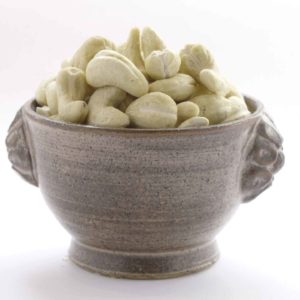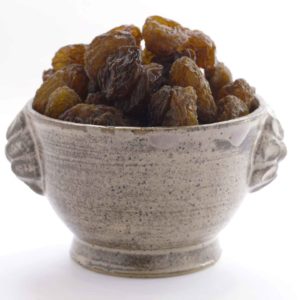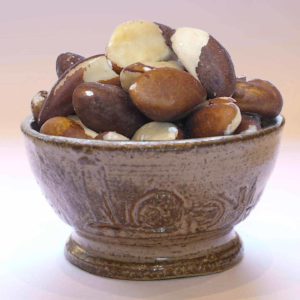0
- ONLINE GROCERY
- OUR HISTORY
- BLOG
- CONTACT
- MY ACCOUNT
- PRO
15,20 €101,40 € /kg
As a snack, plain pistachios are an easy-to-eat dried fruit whose delicacy delights the taste buds! For breakfast, add raw, roasted, whole, ground or chopped pistachios to mueslis, cereals, dairy products (fromage blanc, yoghurt, panna cotta, etc.) or to make your own pistachio milk.
Please note: it is becoming increasingly difficult to find shelled pistachios, so we can sometimes supply them with the thin skin. For more information, please contact us.

A dry fruit produced in a Mediterranean climate, the pistachio is the fruit of the true pistachio tree. A small green seed, pistachios are a popular accompaniment to aperitifs when in the shell, or in desserts and breakfasts when pruned, as shown here. A source of potassium and magnesium, the 30-vitamin pistachio has been enjoyed for thousands of years. Traces of them can be found in Anatolia (Turkey) 7000 BC. Introduced to Europe by the Romans, they only arrived in France much later, under Louis XIV.
History
The pistachio tree (Pistacia Vera L.) is thought to have originated in Central Asia - Asia Minor. It is one of the oldest nut trees, since its fruit, the pistachio, was already consumed 7,000 years BC.
The writings of Pliny the Elder (author of the encyclopaedia Natural History, 1st century A.D.) relate that the Romans introduced the pistachio tree at the same time, in Europe (in Rome) then in Spain, Greece... And it was at the end of the 19th century that it was exported to the United States. The pistachio belongs to the Anacardiaceae family. This tree tolerates cold winters and enjoys long, hot summers, but fears late frosts and excessively humid climates. It takes at least ten years for the tree to bear its first fruit. The pistachio differs from other oleaginous fruits in its yellow-green color and partially open shell, making it an easy nut to eat. They appear in clusters on the tree. As the kernel ripens, it expands beyond the volume of the shell and cracks. At the same time, the pericarp (the downy, fleshy green skin that protects the shell) turns from soft green to pink-violine, once the fruit is ripe.
A delight to incorporate into your preparations, nibble on as a snack or eat as an aperitif as is, or grilled and/or salted...
Properties
Introduce nuts (plain, toasted or not, with no added salt or fat) into your diet on a regular basis: a small handful a day (approx. 15g), depending on the composition of your meals. This quantity is equivalent to about one tablespoon of oil (lipid content).
Pistachios are recommended for...
- everyone (children, teenagers, students, pregnant or breastfeeding women, athletes, mobile or sedentary workers...): pistachios are an excellent source of nutrients (proteins, lipids, carbohydrates, fiber, vitamins and minerals). Among dried fruits, it is the champion in terms of vitamins B1, B6 and K. What's more, its high content of polyunsaturated, monounsaturated and oleic fatty acids helps lower bad cholesterol levels, preserve good cholesterol(1) and prevent cardiovascular disease and type II diabetes.
- vegetarians, vegans/vegetarians: thanks to its contribution of vitamins B1, B2, B6, K, copper, phosphorus, potassium, magnesium, selenium and zinc, pistachios help cover the body's needs.
- for the elderly: rich in fiber, pistachios are ideal for regulating intestinal transit, containing up to 20% fiber.
Pistachios also contain 2 carotenoid antioxidants (lutein and zeaxanthin), which have a positive effect on eye health, helping to prevent AMD (age-related macular degeneration)(2-3).
Be careful, however, not to over-indulge, especially when grilled and salted (high salt and fat content).
Consumption
As an aperitif, pistachios can be eaten plain or toasted-salted, on their own or with other products (almonds, hazelnuts, walnuts, cashews, dried fruit, etc.). If you use pistachios in a mixture, be sure to warn your guests so they don't bite into the shell!
Pistachios can be used to flavour breads and brioches. Slip into your salads (green, mixed or raw), pastas, purées, soups, terrines-pâtés, stuffings, tajines... Flavor your rice and cereals, meats, poultry, shellfish, sauces, liqueurs... Accompany your cheese platter (goat's, ewe's, etc.).
Use it in pastries, tarts, cakes, cookies, brownies, nougats, mendiants / chocolates, flans, crème brûlées, cereal bars, homemade ice creams, oriental pastries (Basboussa, Baklava, Cornets...).
Tip: to trim your pistachios, plunge them into a pan of boiling water for 1 to 2 minutes. Drain and run under cold water to prevent further cooking. Once perfectly drained, the skins come off easily.
Recommendations
Pistachios should be part of a varied, balanced diet.
However, this product is not recommended in cases of :
- food allergies (nuts),
- kidney failure,
- intestinal disorders.
Do not give to children under 3 years of age.
(1) The JN (The Journal of Nutrition) - American Institute of Nutrition, Pistachios Increase Serum Antioxidants and Lower Serum Oxidized-LDL in Hypercholesterolemic Adults, March 16, 2010.
(2) Richer et al, 2007 S. Richer, J. Devenport and J.C. Lang, LAST II: Differential temporal responses of macular pigment optical density in patients with atrophic age-related macular degeneration to dietary supplementation with xanthophylls, Optometry 78 (5) (2007), pp. 213-219.
(3) SanGiovanni JP, Chew EY, et al, The relationship of dietary carotenoid and vitamin A, E, and C intake with age-related macular degeneration in a case-control study: AREDS Report No. 22. Arch Ophthalmol 2007;125:1225-32.
Botany: Pistacia vera L.
Origin : Turkey
Ingredients : 100% ORGANIC pistachio, pruned
Shelf life: guaranteed for 200 days
Quality : ORGANIC
Other names :
Nutritional value of whole pistachios
(Per 100 g)
Protein
Carbohydrates
Sugars
Fat
Saturated fatty acids
Salt
| Weight | 50 g |
|---|---|
| Weight | 100g pouch, 250g pouch, 500g pouch, 1000g pouch |
| DLUO | |
| Continent-Country | Asia |




|
L'atelier ferme du 17 au soir au 10 août inclus. Derniers envois le 16 juillet. Vous pouvez cependant passer vos commandes durant cette période pour une expédition dès notre retour. |